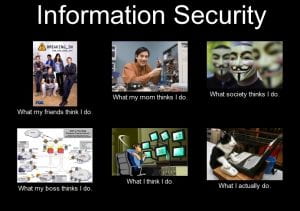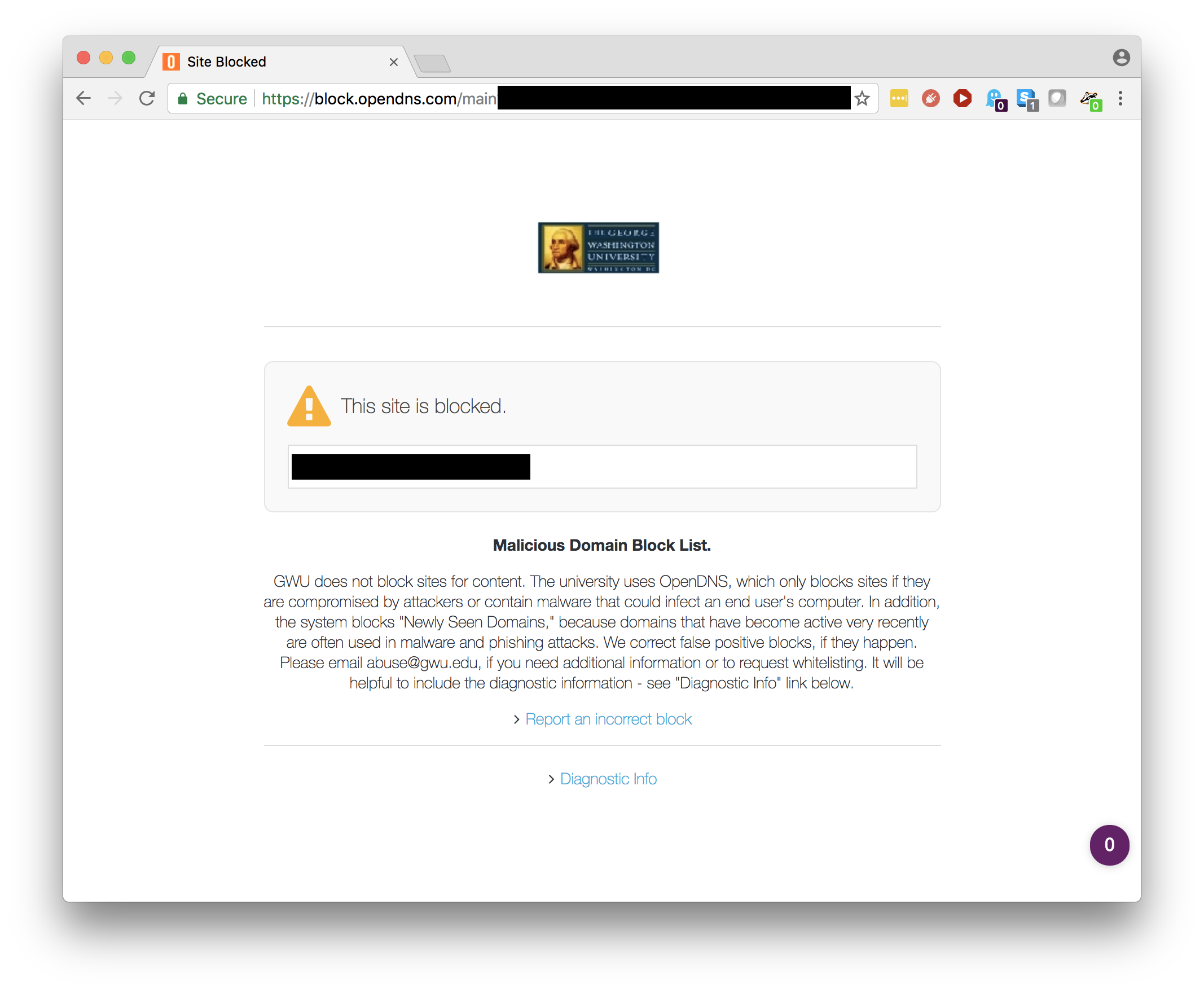People have a lot of pre-conceived notions about security teams and practices. While some misconceptions may be grounded in truth and others fairly outlandish, there is a lot going on behind the scenes that users may not see. From claims that we are all hackers wearing hoodies and doing nefarious deeds to the perception that we are here to get in your way, we will help you understand what is true, what is not, and why these perceptions might exist.
Myth #1: Security is just here to say no
Being at a university presents the unique challenge of providing the tools and technology necessary for students and faculty to research, learn, and achieve their goals. We must strike a difficult balance between the availability of those resources and the security of the university and our community. As security professionals, we do everything we can to enable safe and reliable access to the tools that the GW community needs to reach their goals. We are here to facilitate a safe IT environment in which all students, faculty, and staff can access the resources that they need, sometimes it sounds like, “no”, but what we are really requesting is modifications that reduce risk of exposure or breaches at GW.
Myth #2: Security only deals with technology
Many people believe that IT security only works on securing servers, reading logs, and other highly technical tasks. On the contrary, the security team has a wide range of responsibilities of which technology is only a part. The security team is continuously engaging with people and data in a multitude of ways. Often trying to help people protect themselves and the organization through a security awareness program or working directly with other teams to enhance security within their operations. They are constantly trying to improve way to protect the GW community’s data by updating policies, implementing best practices, and assessing security processes.
Myth #3: The security team is just a bunch of hackers
Just as many people think that the security team is nothing but hackers. This is far from the truth. Information security is a wide field with many specializations and it takes all sorts to be effective. While some members of the team might be highly technical penetration testers, their counterparts are security professionals focused on defensive security and protecting the GW network and assets from outside threats. Not to mention that members of the IT Security team range from awareness professionals working with people and outreach to analysts focused on identifying and reducing risk.
Myth #4: The security team takes care of security so I don’t have to
The security team works tirelessly to ensure that the GW community, information, and assets are as well protected as possible, but the team is not always the first line of defense. Security is your responsibility too. Our community is often the first line of defense when it comes to attacks from outside GW. Social engineering (aka tricking people and deceiving them) is a common tactic employed by attackers and encompasses phishing, piggy backing, and taking advantage of users in the workplace. All of this means that you, the user, needs to play a vital role in protecting the university, or, as we call it #SecuringGW. Protecting your own information is an essential puzzle piece to overall security of GW. Catching phishing emails and forwarding them to abuse at GW may seem like a small task, but it is small actions like this that alert the team and protect GW from large breaches. Being aware of people trying to enter buildings where they don’t belong, and maintaining a clean desk free of sensitive materials are all security measures that you can take to do your part in #SecuringGW.
Fact: GW Information Security – Your Trusted Advisor
The information security team strives to facilitate access to the resources that the GW Community needs in as secure a manner as possible. Security affects everyone; data loss, lack of availability, and compromised systems impede day to day business functions, which means it affects the day to day lives of everyone on campus. In order to help prevent this, the security team acts as a Trusted Advisor to everyone in the GW Community. Whether you want to implement a new system, service, or application, or begin a new project, involving the GW security team as Trusted Advisors from the start enables us to aid in proper project oversight and completion while maintaining and promoting the confidentiality, integrity, and availability of GW’s data, systems, and services.



